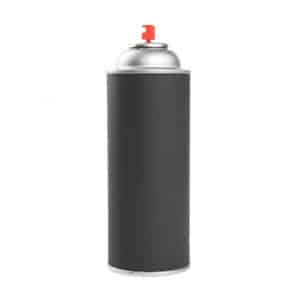Introduction
Graffiti as we know it may have a relatively short history but has managed to touch almost every corner of the globe. LETTERS used to dominate but today the culture has expanded: new forms are explored, and characters, symbols and abstractions have become more popular.
Graffiti Art Materials
Over the past few years graffiti artists have been using a wider range of material and expression. Stickers, posters, stencils, airbrush, oil-based chalk and all varieties of paint and even sculpture are being used.
Most artists have expanded beyond relying solely on the spraycan. As a result, many people now refer to this type of art as the post-graffiti movement. Incidentally, nationality, race and sex have no bearing or merit on the graffiti scene.
World Wide History of Graffiti
The word graffiti is derived from the Italian terms graffio, meaning scratch. Graffiti has been around since prehistoric caveman discovered how to blow colored powder and carve images on cave walls.
In ancient Greece, fragments of clay were found on which notes had been carved. Pompeii excavations revealed graffiti, including election slogans, drawings and even obscenities. In fact, graffiti can be found all over the history of the world including: WWII propaganda from the Nazi party and resistant groups.
The Beginnings
Today’s graffiti developed towards the end of the 1970s in New York and Philadelphia. Artists such as Taki 183 (NY), Julio 204 (NY), Cat 161 and Cornbread (Philadelphia) painted their names on walls or in subway stations around Manhattan and Philadelphia.
The unique make-up of New York City- in which the Harlem slums and the glamorous world of Broadway stand side by side- seems to have been a breeding ground for the first graffiti artists, bringing together many different cultures and classes in one place.
This environment fueled an artistic battle against the powerful and wealthy and those living in poverty in the ghetto. For example, CornBread became notorious by spray painting his “tag” (the name of the graffiti artist) on an elephant in the Philadelphia Zoo and on the side of the Jackson 5’s private jet.
Tags
Initially graffiti artists used their real names or nicknames, but soon the first pseudonyms started to appear. Tags got bigger and bigger until the first ‘pieces’ (short for masterpieces) appeared on New York trains. Artists initially targeted trains because million of people could potentially see the piece. The huge phenomenon eventually led to the gating of train lots and regular buffing of trains. This trend of train tagging , quickly caught on in Europe. The popularity of graffiti lead to movements and exhibits in Amsterdam and Antwerp, finding roots in the punk scene.




Hello Ardena,
The article has been updated to include CornBread in the sentence which you contested. Also the article doesn’t explicitly state that Cornbread lived in New York, it was alluding to other famous graffiti artists such as TAKI 183 and Julio 204 who were influential members of the modern graffiti movement in New York.
This post has false inaccurate information. Like when you say “For example, became notorious by spray panting his tag on an elephant” You forgot the name of the person who actually spray painted the elephant… and his name is CornBread. He is my father and he tagged his name EVERYWHERE! Also, my father did not live in Harlem or Manhattan. In fact he didn’t even live in New York, he lives in Philadelphia and that is where his graffiti journey begins, and where he originated graffiti. So I must say to you, whoever posted this link… your information is incorrect. Also if you wish to post information and facts about my father (CornBread) please make them accurate and true.
Thank You ,
Ardena Randle (Daughter of Cornbread)